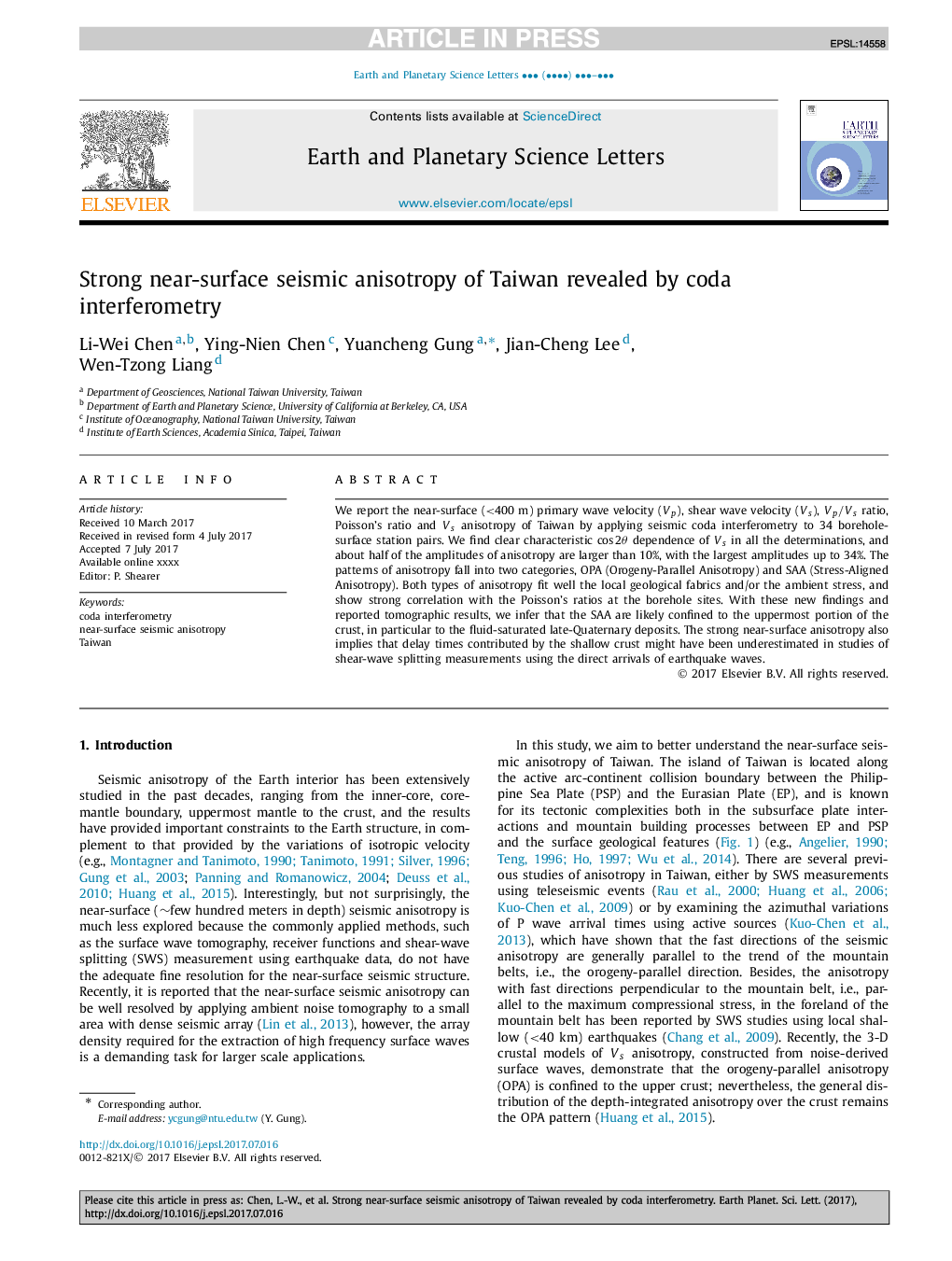| Article ID | Journal | Published Year | Pages | File Type |
|---|---|---|---|---|
| 5779670 | Earth and Planetary Science Letters | 2017 | 7 Pages |
Abstract
We report the near-surface (<400 m) primary wave velocity (Vp), shear wave velocity (Vs), Vp/Vs ratio, Poisson's ratio and Vs anisotropy of Taiwan by applying seismic coda interferometry to 34 borehole-surface station pairs. We find clear characteristic cosâ¡2θ dependence of Vs in all the determinations, and about half of the amplitudes of anisotropy are larger than 10%, with the largest amplitudes up to 34%. The patterns of anisotropy fall into two categories, OPA (Orogeny-Parallel Anisotropy) and SAA (Stress-Aligned Anisotropy). Both types of anisotropy fit well the local geological fabrics and/or the ambient stress, and show strong correlation with the Poisson's ratios at the borehole sites. With these new findings and reported tomographic results, we infer that the SAA are likely confined to the uppermost portion of the crust, in particular to the fluid-saturated late-Quaternary deposits. The strong near-surface anisotropy also implies that delay times contributed by the shallow crust might have been underestimated in studies of shear-wave splitting measurements using the direct arrivals of earthquake waves.
Keywords
Related Topics
Physical Sciences and Engineering
Earth and Planetary Sciences
Earth and Planetary Sciences (General)
Authors
Li-Wei Chen, Ying-Nien Chen, Yuancheng Gung, Jian-Cheng Lee, Wen-Tzong Liang,
